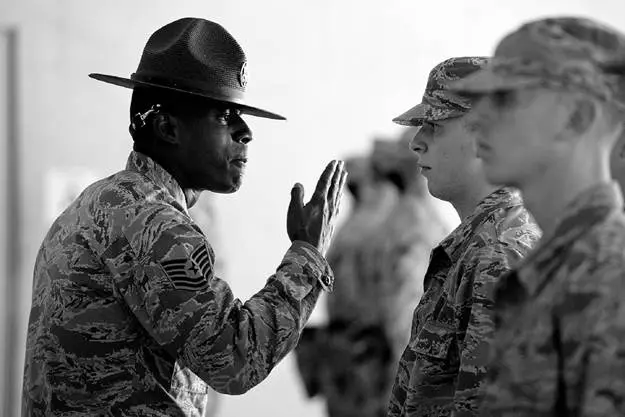Employees have spent the past few years working remotely, and some just now are starting to return to the office, whether permanently or for a hybrid work week. The challenge for managers is to ensure that the team, no matter where the individuals are located, work together as a collective whole. It also falls to managers and bosses to communicate effectively so employees understand the corporate goals and are more apt to support them.

“I don’t gripe to you, Reiben. I’m a captain. There’s a chain of command. Gripes go up, not down. I don’t gripe to you. I don’t gripe in front of you.” —Captain Miller, Saving Private Ryan, Dreamworks, 1998
People have been spending too much time pontificating on how AI is going to take over, make things all better, and clean up all the messes we made. Back in 2019, we think Ginni Rometty, IBM’s CEO, was secretly delighted when the great debater Harish Natarajan beat the company’s AI Miss Debater in a live showdown at the firm’s Think conference in San Francisco. It reinforced what she had been saying all along… it isn’t artificial intelligence. Call it what it is—augmented/assisted intelligence.
Rometty’s replacement, Arvind Krishna, and other CEOs have to guide, build, reshape, grow their companies in a way that is similar to the Think Conference face-off debate. Tools/technology like AI can help your business, but it takes good bosses to make good companies.
As Natarajan explained following his win, debaters need to:
- Process vast amounts of information
- Consider/construct relevant arguments
- Make the points/arguments matter to the audience
- Use language, emotions, rhetoric, and examples that resonate with the audience
Most companies, management, and teams are under unprecedented pressure today, so using something that will give them assistance and perhaps even an edge seems logical. Of course, it also gives them a scapegoat, something besides themselves, to blame when things go to hell in a handbasket!
Managements have always been under pressure to call the right shots and make the right moves, but it just keeps getting more complicated because life keeps getting more and more complicated. Strategic leaders today have to focus on long-term goals with new ways of thinking about the world, the businesses around them, the people around them, and themselves. They plan ahead, keep their attention focused on goal-oriented plans, and don’t let short-term distractions sway their focus. Well-rounded managers/leaders find ways to move the team past its threshold and past its own limitations to achieve what it couldn’t do before.
Along the way, the team solves problems, gets things done, meets deadlines, makes deals, moves toward the organization’s long-term goals, and pleases team members and customers. After all, if managers/leaders aren’t pleasing team members and customers, they don’t have a business! It’s becoming a two-pronged problem as organizations shift from a structured hierarchy to networks of teams.
As we have seen, a growing number of workforces have become outspoken against management decisions:
- Google’s team walked out regarding government contracts and departure golden parachutes provided to senior executives relieved under questionable circumstances and spoke out on the firm’s agreement to censor content coming into China in return for access to citizens. Now, they’re wondering aloud how long they’ll have a job.
- Facebook’s team (and governmental oversight) pushed back against management for activities with Cambridge Analytics, personal privacy, and more. Zuckerberg solved the problem by changing the company name and changing the company’s view of tomorrow that only he can see.
- Twitter is… who knows what, now that they operate with minimal staff and mercurial boss, and folks are floating in limbo, waiting for a real corporate goal/image.
- Firms are under increased pressure to become more transparent and more proactive— especially in the areas of sexual harassment and discrimination, in addition to providing greater flexibility of work based on physical proximity.

Positional leadership by virtue of title/position is being aggressively challenged. Because organizations are becoming flatter and more diverse, CEOs and senior management now have the challenge of inspiring team loyalty because of their expertise, vision, and judgment.
The CEO should focus his/her attention on developing an understanding internally and externally on the foundation and history of the firm and its focus/direction as well as its mission and its long-range goals. It is this face, this personality, that binds stakeholders to the company. When the organization’s foundation, precepts, and goals are clearly understood throughout the organization and communication is open/transparent, it is easier and more satisfying for employees to handle the day-to-day tasks and meet short-term goals.
Even Marc Benioff, cofounder/co-CEO of Salesforce, not only constantly reminded stakeholders of the founding precepts of the company, but has tried to focus clear, concise attention on the firm’s need to set an example of what organizations must do to ensure diversity and equality internally and externally. Now those words sound a little hollow.
CEOs like Benioff, Rometty, Microsoft’s Satya Nadella, Apple’s Tim Cook, and others who don’t conduct business with their eyes wide shut are individuals who can shape and articulate their brand’s image in a clear, concise manner. Their task continues to entail the need to spell out how the firm will act, react, and interact with employees, business partners, and governments. But as organizations grow flatter and more diverse, they require team leaders who are strong and focused enough to lead at all levels of the company.
First-line managers who set the pace aren’t supervisors who simply make their numbers and quarterly/annual goals. Instead, they have to be skilled coaches who can use the CEO’s vision and direction as a launching pad to attract, inspire, and retain great people. As the rigid chain of command management style becomes a distant memory, the new breed of self-motivated managers will set direction, inspire leadership, and achieve collaboration across generations, geographies, functions, and teams. The big problem that will arise for management is that they will have to deal with a workforce that is always connected but only occasionally physically together.
Executives have to consider the impact and how to cope with this new environment and breed of employee because it is suddenly more difficult to create a common identity and purpose with a workforce that seldom comes together. This shift in attitude from a common focus and goals to simply making a living has been the underlying reason employees have been vocal and critical of corporate plans, programs, and activities.
The challenge of focusing and managing new organizations in the face of employee campus-style political activism is tougher than herding cats. The more technical the company’s mission, the more likely its focus and bromide-filled mission statement can be wielded as tools to organize employees against leadership—as we have seen in recent years.
Firms need to assess, reassess what they are doing, why they are doing it, and how that fits into today’s/tomorrow’s environment.
According to A.C. Nielsen, many brands that are current leaders in their respective categories will lose their positions in less than two years because they aren’t continually evolving, changing their organization, and refocusing its activities and team. The only way CEOs can buoy firms through the inevitable sales valleys is by focusing on tomorrow and enabling team manager guidance today, which means senior management must continually provide:
- Complete awareness among managers of the firm’s long-range goals.
- Clearly defined corporate objectives and direction.
- Enhanced insights into competitive positions and market conditions.
- Consistent internal and external communication emphasizing fair, equitable treatment of all of its stakeholders.
- A positive accounting to customers of the firm’s activities, efforts, and position in the industry and the marketplace.
- Improved understanding of the organization within the business, market, financial communities.
- Open communication about the company, its objectives, its direction, its business/relationship commitment to employees, suppliers, directors, the media, early adopters.
Celebrated Silicon Valley marketing guru Regis McKenna once noted that the average company loses half of its customers every five years, half of its employees every four years, and half of its investors every year. Today, those figures have again been cut in half.
Senior management has to stay ahead of these changes to ensure the company deals with everyone—internally and externally—in a positive, proactive manner. And they have to be able to openly listen even when it is uncomfortable because you never know where the next great idea might come from.
With things constantly changing, remember what Private Jackson said: “Sir…I have an opinion on this matter.” Then realize you don’t know all the answers, so you can objectively listen and make things work as Captain Miller did when he responded, “Well, by all means, share it with the squad.”





